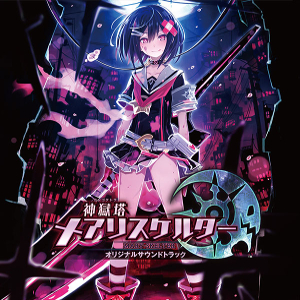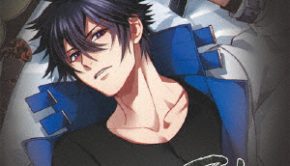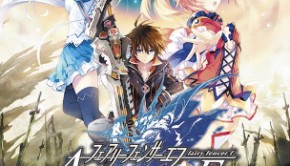Kangokutou Mary-Skelter Original Soundtrack
 |
Album Title: Kangokutou Mary-Skelter Original Soundtrack |
| Record Label: ZIZZ Studio |
|
| Catalog No.: ZSCM-16338 |
|
| Release Date: December 8, 2016 |
|
| Purchase: Buy at CDJapan |
Overview
Kangokutou Mary-Skelter Original Soundtrack accompanies the a dungeon RPG by developer Compile Heart. Featuring two vocal tunes by a composer named ENDO. and background music from ZIZZ Studio, including composers Yoh Ohyama, Yasuhiro Kawagoe, Syntaro Jimbo, Kazune Ogihara, and Toshimichi Isoe. How does the music turn out for a standalone listen?
Body
The album opens and closes with vocal tunes by ENDO. The first, “Our Ballad Lost Beforehand” is orchestral rock in nature with some pop leanings. The melody itself is quite catchy and the overall tune is fairly energetic. The vocals and overall style of the tune fit quite well and seem to match the visual direction of the game as well. The closing tune, “Yorokobi no Uta,” is interesting but one that is quite disjointed and doesn’t come off nearly as strong. It’s essentially a medley of vocalized classical pieces primarily done in a rock style, although some of the tunes do have some success while others fall quite flat.
The rest of the soundtrack features tunes from various members of ZIZZ Studio, with Yoh Ohyama and Yasuhiro Kawagoe taking the majority of them. “Labyrinth” by Toshimichi Isoe, featuring harpsichord and accordion, manages to be simultaneously mysterious yet comical in nature. It’s enjoyable, but nothing too special either. “Distorted Reality” is much more atmospheric and has an electronic sound overall, but doesn’t particularly engage the listener either. Ogihara’s “Children’s Night” is an atmosphere blend of percussion instrument and an airy woodwind lead, “Encounter” is a tense mix of orchestral, organ, rock, and electronic elements. Syntaro Jimbo’s “SKIP” is very Persona-esque with its pop/funk rock styling. While derivative, the melody itself is quite nice and is strengthened by the keyboard and guitar parts. “PIPELINE” is more cutesy synth rock in approach, but again doesn’t particular stand out stylistically or melodically speaking either.
The highlights of the album certainly come from both Kawagoe and Ohyama. For the former, “Lullaby for Grave Markers” is a mysterious piece with a music box driven melody and deep cello notes that really accentuate the atmosphere. On a similar atmospheric note, “Sleeping City of Ice” is a beautiful piano driven. The ethereal synths and strings work to add some musical texture to the piece and also help to create an air of mystery. “Drive of speeding” is an orchestral/electronic hybrid with a strings focused melody, though suffers from a fairly derivative accompaniment. On a more subdued note, “Sad Rain” is a melancholy and poignant piano and strings tune that manages to create a beautiful soundscape thanks to its melody and accompaniment. “Beginnings” with its strings, xylophone, and harpsichord is an odd mishmash. Couple that with a strange progression and it’s just servicable. Likewise, the Japanese inspired soundscape of “The Attending World” comes across as nothing particular memorable, but not unenjoyable either.
Two of his battle themes, “Soldier of Wind” and “Banquet of the Gods Who Uphold Justice,” bring tons of energy. The former is an upbeat violin tune with a rock focus. The melody itself is quite catchy and is very reminiscent of a Falcom tune, while the latter combines choir, rock, and orchestral elements to craft another tune very reminiscent of Falcom. The end result is a bit cliched, but is still quite enjoyable thanks to its fantastic melody. The Falcom sounds continue with Ohyama’s “Freedom of Spirit”, with its fantastic melody combined with piano, violin, and electronic components, and “Skelter,” a somewhat generic rock tune with a violin focus. Both “Drive to Freedom” and “Metalic Bow Fight” also feature rock with a violin focus, in the spirit of Falcom, with enjoyable melodies. However, the latter is much more engaging in terms of a standalone listen.
Summary
In the end, the soundtrack to Kangokutou Mary-Skelter is serviceable. While some tunes certainly manage to stick out, namely those by Isoe and to a lesser extent Ohyama, other tunes tend to fall a bit more on the generic side. Fans of the studio’s output will certainly find something to enjoy, but I wouldn’t recommend it for everyone.
Do you agree with the review and score? Let us know in the comments below!
3
Posted on January 10, 2017 by Don Kotowski. Last modified on January 10, 2017.














